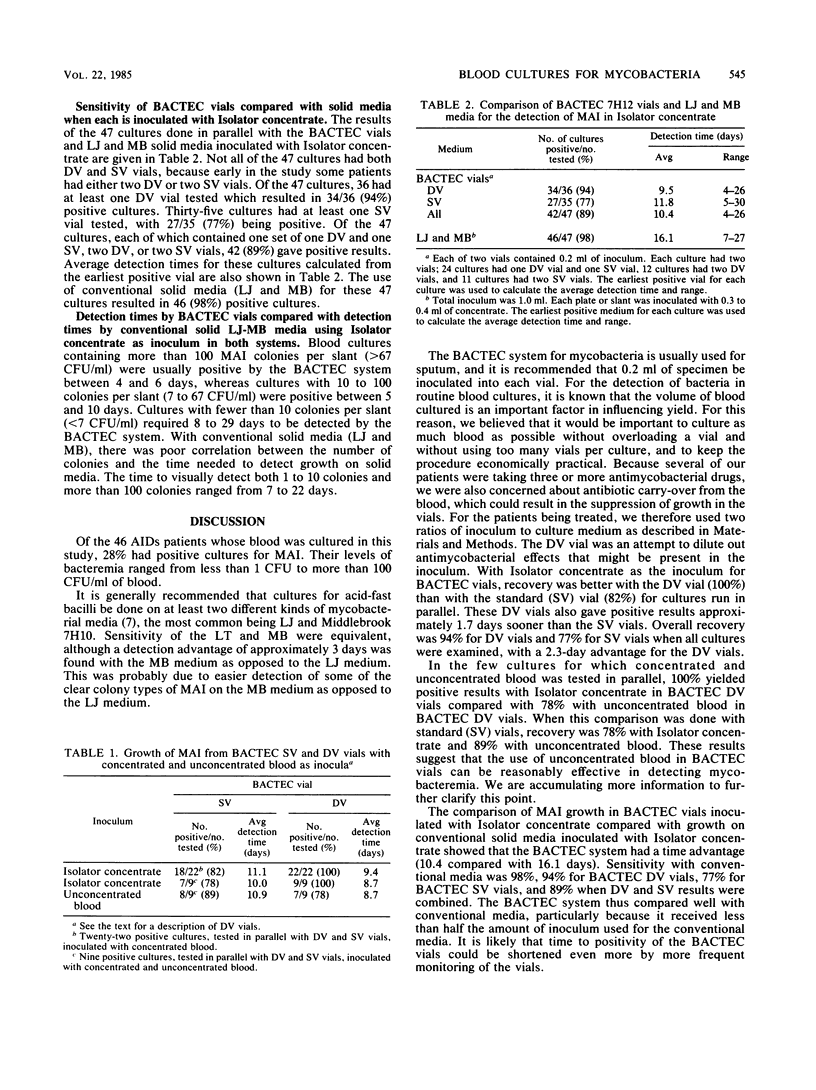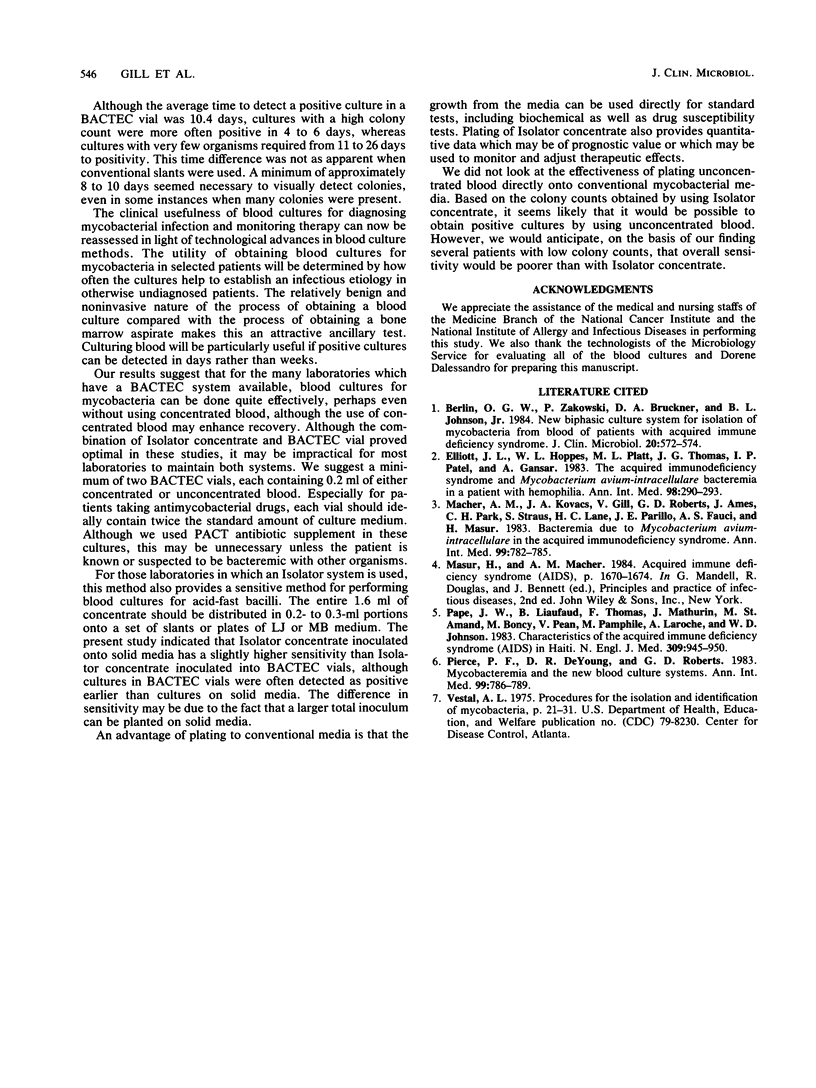Abstract
Patients with acquired immune deficiency syndrome may develop infection with mycobacteria, particularly Mycobacterium avium-M. intracellulare (MAI). These infections can frequently be associated with demonstrable mycobacteremia with the organism. In this study, we compared the sensitivity of a radiometric (BACTEC system; Johnston Laboratories, Inc., Towson, Md.) liquid medium culture system with that of conventional solid mycobacterial culture media for cultures of blood from these patients. Both systems were inoculated with blood concentrate prepared by lysis-centrifugation (Isolator; Du Pont Co., Wilmington, Del.). Of 46 acquired immune deficiency syndrome patients whose blood was cultured, 28% had cultures positive for MAI. Patients had from less than 1 to more than 100 MAI colonies per ml of blood. Lowenstein-Jensen and Middlebrook 7H11 agars were comparable in recovery of MAI. BACTEC 12A vials containing double the standard volume of medium (4 ml) were more sensitive and were positive slightly earlier than vials containing the standard volume (2 ml). Conventional media detected 98% of positive cultures; BACTEC vials containing double volumes of medium detected 94% of positive cultures, whereas single-volume vials detected 77%. BACTEC vials were positive approximately 5 to 6 days sooner than slants or plates containing conventional media. For a few cultures, the use of unconcentrated blood was compared with the use of Isolator-concentrated blood by using each of these as inocula for BACTEC vials. Results for these cultures suggested that, although the use of Isolator-concentrated blood resulted in greater sensitivity than the use of unconcentrated blood would, the use of unconcentrated blood would still result in the detection of at least 78% of positive cultures.
Full text
PDF



Selected References
These references are in PubMed. This may not be the complete list of references from this article.
- Berlin O. G., Zakowski P., Bruckner D. A., Johnson B. L., Jr New biphasic culture system for isolation of mycobacteria from blood of patients with acquired immune deficiency syndrome. J Clin Microbiol. 1984 Sep;20(3):572–574. doi: 10.1128/jcm.20.3.572-574.1984. [DOI] [PMC free article] [PubMed] [Google Scholar]
- Elliott J. L., Hoppes W. L., Platt M. S., Thomas J. G., Patel I. P., Gansar A. The acquired immunodeficiency syndrome and Mycobacterium avium-intracellulare bacteremia in a patient with hemophilia. Ann Intern Med. 1983 Mar;98(3):290–293. doi: 10.7326/0003-4819-98-3-290. [DOI] [PubMed] [Google Scholar]
- Macher A. M., Kovacs J. A., Gill V., Roberts G. D., Ames J., Park C. H., Straus S., Lane H. C., Parrillo J. E., Fauci A. S. Bacteremia due to Mycobacterium avium-intracellulare in the acquired immunodeficiency syndrome. Ann Intern Med. 1983 Dec;99(6):782–785. doi: 10.7326/0003-4819-99-6-782. [DOI] [PubMed] [Google Scholar]
- Pape J. W., Liautaud B., Thomas F., Mathurin J. R., St Amand M. M., Boncy M., Pean V., Pamphile M., Laroche A. C., Johnson W. D., Jr Characteristics of the acquired immunodeficiency syndrome (AIDS) in Haiti. N Engl J Med. 1983 Oct 20;309(16):945–950. doi: 10.1056/NEJM198310203091603. [DOI] [PubMed] [Google Scholar]
- Pierce P. F., DeYoung D. R., Roberts G. D. Mycobacteremia and the new blood culture systems. Ann Intern Med. 1983 Dec;99(6):786–789. doi: 10.7326/0003-4819-99-6-786. [DOI] [PubMed] [Google Scholar]


